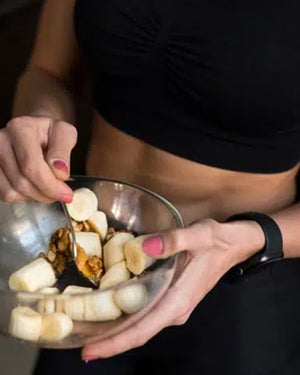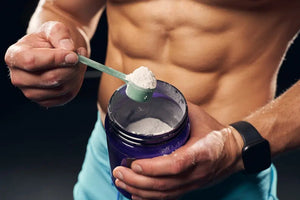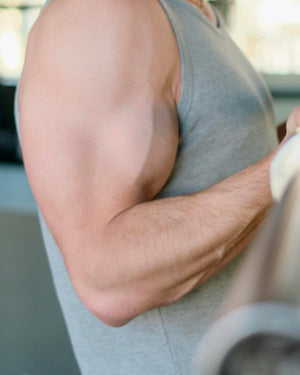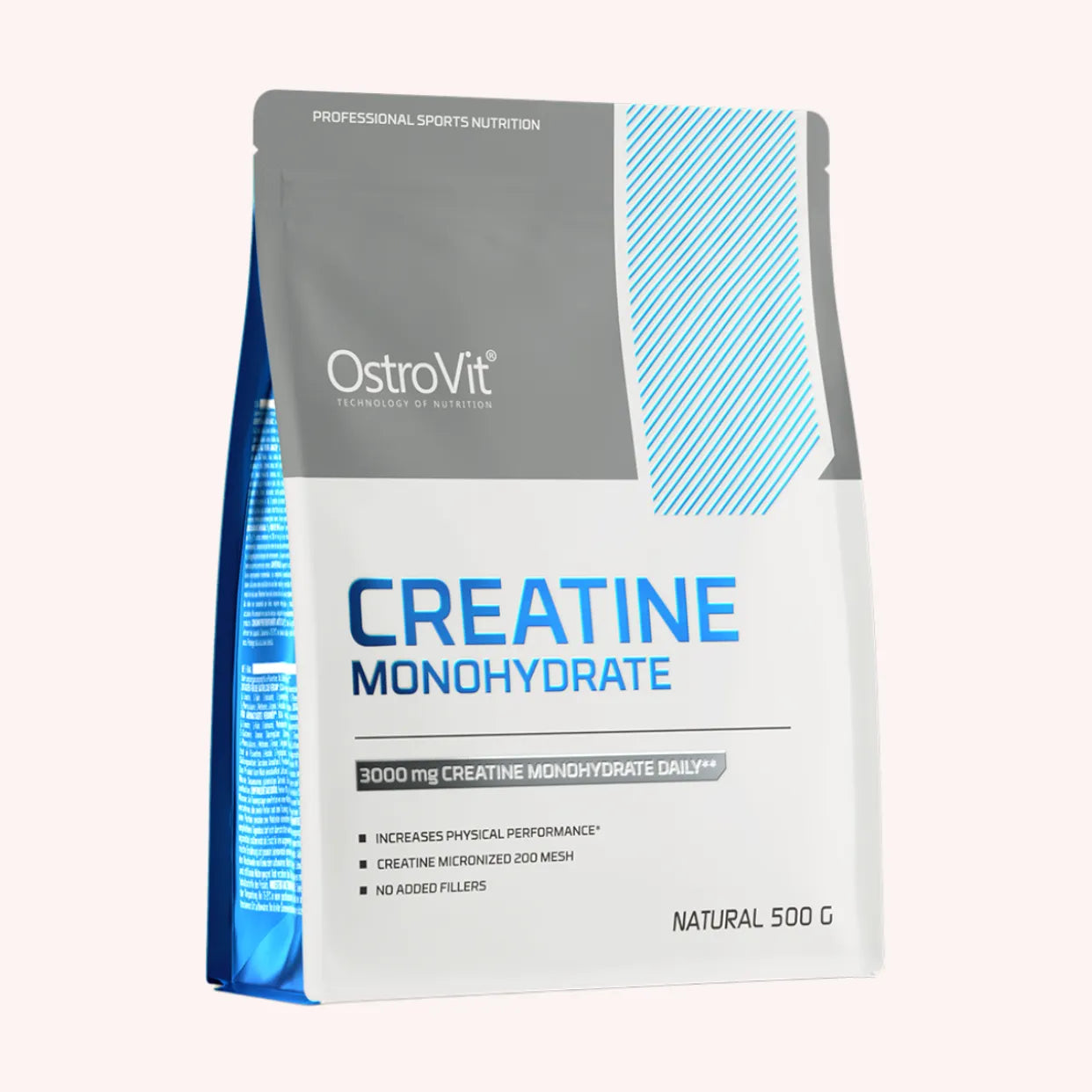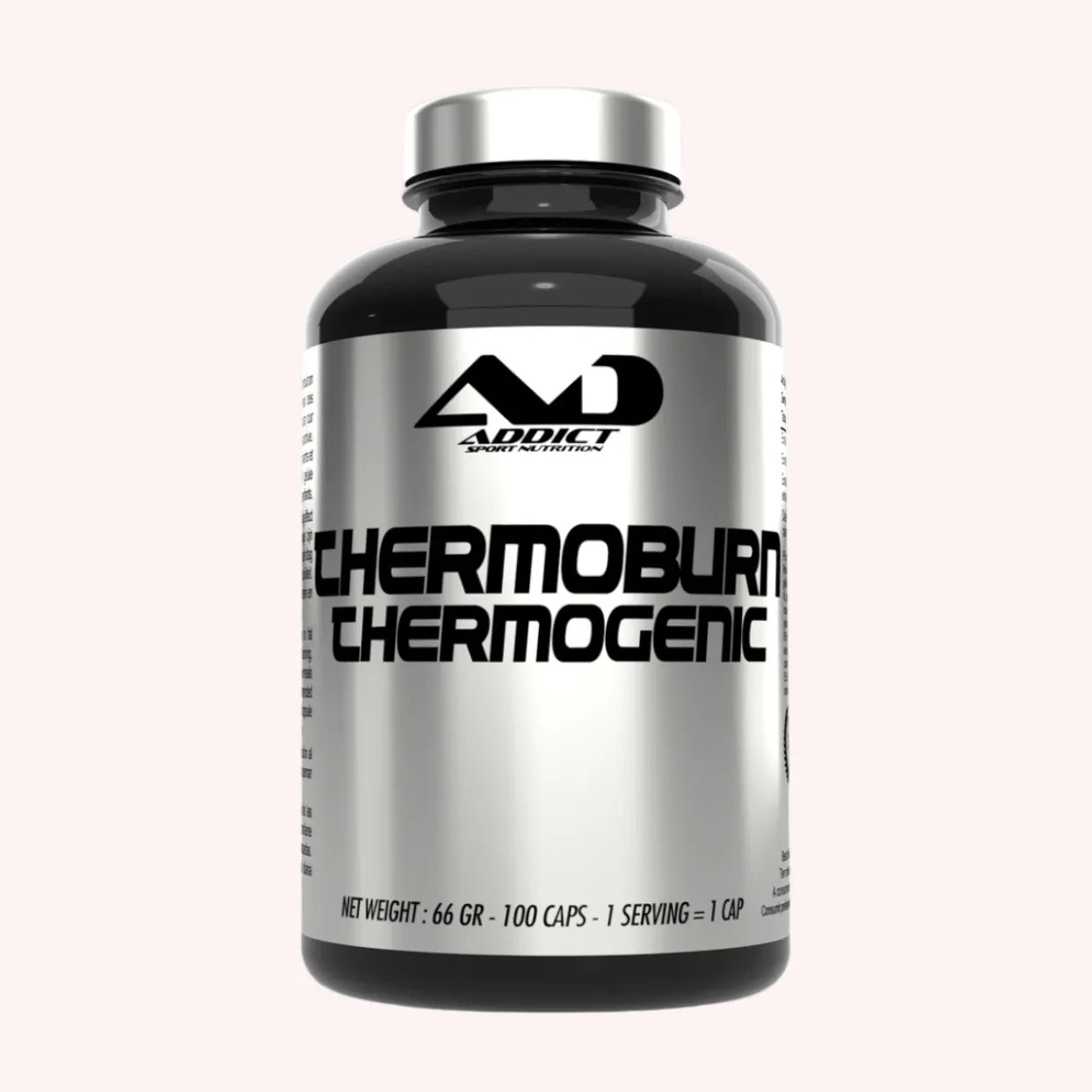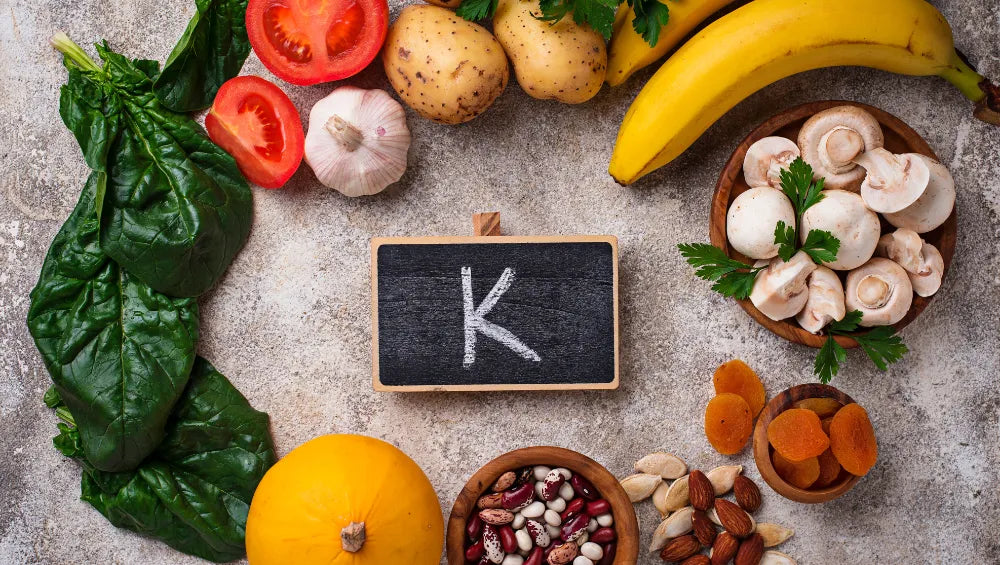If you're looking to lose body fat and achieve a leaner, more defined physique, cutting is the method to follow. It's a process aimed at reducing the amount of body fat while maintaining lean muscle mass. It involves a strict diet, regular exercise, and proper hydration management.
However, it's not an easy process, and it's important to understand the basics for a successful cut. How do you cut? What are some practical tips for a successful cut? How can you adjust your diet, training, and lifestyle to maximize fat loss while minimizing muscle loss?
How a dryer works
The principle of how a cut works is based on the fact that to lose body fat, it is necessary to create a caloric deficit by consuming fewer calories than you burn. This forces the body to draw on its fat reserves to obtain the energy it needs to function. To achieve this goal, it is important to understand the different key elements that make up the principle of how a cut works .
Food
To create this calorie deficit, the diet must be adjusted to be low-calorie . This means that the amount of calories consumed must be less than the amount of calories burned. To achieve this, it is generally recommended to reduce carbohydrates and fats while increasing protein. Protein has the advantage of maintaining lean muscle mass during weight loss, while carbohydrates and fats provide energy and are easily stored as body fat if consumed in excess.
Physical activity
In addition to diet, physical activity is also a key component of a successful cut. Cardiovascular exercise , such as running, cycling, or swimming, burns calories and helps create the necessary calorie deficit. Additionally, resistance training, such as weight training, helps maintain muscle mass during weight loss and helps increase basal metabolic rate , meaning the body burns more calories at rest.
Hydration management
However, a successful cut isn't just about diet and exercise. Hydration management is also important, as water is essential for many metabolic processes in the body . It's recommended to drink at least two liters of water per day to maintain adequate hydration, but also to reduce water retention, which can make you feel like you haven't lost weight despite your efforts.
Sleep quality and stress management
Finally, sleep quality and stress management can also play an important role in the success of a cut. Stress promotes the production of cortisol , a hormone that causes fat storage, while quality sleep is essential for the body to recover and regulate its hormones .
What to eat during a cut?
Nutrition is a key element for a successful cutting cycle. To lose fat while maintaining muscle mass, it's important to eat a balanced, high-quality diet. Here are some recommended foods for cutting to maximize fat loss:
Proteins
Protein is essential for maintaining muscle mass during weight loss. Recommended protein sources while cutting include lean meats , fish , eggs , low-fat dairy products , legumes, and nuts .
It is recommended to consume between 1.2 and 1.5 grams of protein per kilogram of body weight per day to maximize fat loss and maintain muscle mass.
Vegetables
Vegetables are low in calories and rich in nutrients, making them an ideal choice for a balanced diet during a cutting phase. Leafy greens, carrots, cucumbers, tomatoes, and peppers are examples of vegetables recommended for cutting.
The fruits
Fruits are also rich in nutrients and fiber, making them useful during a cutting cycle. Recommended fruits include berries , apples , pears , oranges, and bananas . However, it is important to limit the consumption of sweet fruits, such as grapes or mangoes, which can be high in calories.
Healthy fats
Healthy fats are important for a balanced diet and maintaining satiety while cutting. Recommended sources of healthy fats include avocados, nuts, seeds, olive and coconut oils. However, it's important to limit your intake of saturated fats , such as those found in fatty meats and high-fat dairy products.
Complex carbohydrates
Complex carbohydrates provide energy during a cut, but it's important to choose low-glycemic carbohydrate sources to avoid blood sugar and insulin spikes. Recommended carbohydrate sources include root vegetables, legumes, whole grains, fruits, and sweet potatoes.
Recommended dietary supplements during a cutting phase
Dietary supplements can be helpful in maximizing results during a cutting cycle. However, it's important to note that supplements are not a substitute for a healthy diet and regular exercise routine . Here are some recommended dietary supplements for cutting to maximize results.
Protein powders
Protein powders are a convenient way to increase protein intake while cutting. Protein powders are rich in essential amino acids , making them an ideal choice for maintaining lean muscle mass during weight loss. Protein powders can be consumed post-workout or between meals to increase protein intake.
Omega-3 fatty acids
Omega-3 fatty acids are known for their anti-inflammatory properties and heart-healthy benefits. Omega-3 fatty acids can also be helpful during a cutting cycle due to their anti-catabolic properties. Omega-3 fatty acids can be consumed in supplement form or by eating foods rich in omega-3s, such as oily fish.
Fat burners
Fat burners are dietary supplements that can help increase metabolism and stimulate fat loss. Common ingredients in fat burners include caffeine, theobromine, and synephrine. It's important to note that fat burners are not a quick fix and should not be used as a substitute for a healthy diet and regular exercise program.
Creatine
Creatine is an amino acid that is often used to enhance performance during resistance training. However, creatine can also be useful during cutting due to its anti-catabolic properties. Creatine can help maintain muscle mass during weight loss.
Vitamins and minerals
Vitamins and minerals are important for maintaining a healthy and functional body during a cutting cycle. Vitamins and minerals can help support the immune system , regulate hormones, and maintain good mental health. Vitamins and minerals can be taken in supplement form or by eating foods rich in vitamins and minerals, such as fruits and vegetables.
Some examples of dry menus
Here are some sample diets for a slimming diet. Not all of them are suitable for everyone. For this reason, it's important to tailor your diet to your individual needs.
Menu 1
- Breakfast: Vegetable omelet (eggs, peppers, mushrooms, spinach), slice of toasted wholemeal bread, green tea
- Snack: Plain Greek yogurt, red fruits
- Lunch: Grilled chicken salad (grilled chicken, lettuce, tomatoes, cucumbers, light vinaigrette), slice of toasted whole-wheat bread
- Snack: Protein bar
- Dinner: Grilled salmon, steamed broccoli, quinoa
Menu 2
- Breakfast: Oatmeal, skim milk, banana, pecans
- Snack: Protein smoothie (almond milk, banana, peanut butter , protein powder)
- Lunch: Grilled fish, steamed vegetables (carrots, zucchini, peppers), brown rice
- Snack: Plain Greek yogurt, kiwi
- Dinner: Grilled chicken, steamed green beans, sweet potato
Menu 3
- Breakfast: Vegetable omelet (eggs, spinach, tomatoes), slice of toasted wholemeal bread, green tea
- Snack: Protein bar
- Lunch: Tuna salad (tuna, lettuce, cucumbers, tomatoes, light vinaigrette), slice of toasted wholemeal bread
- Snack: Protein smoothie (almond milk, strawberries, protein powder)
- Dinner: Grilled steak, steamed asparagus, quinoa
These menus are based on a balanced diet rich in protein, vegetables, fruits, healthy fats and complex carbohydrates.
Also read: 5 breakfasts for muscle gain
How should you train during a cutting phase?
When cutting, the goal is to lose fat while retaining as much muscle mass as possible. To achieve this, training must be tailored accordingly.
Maintain high intensity during training sessions
First, you need to maintain a high intensity during your workouts. This can be achieved by increasing your training volume or reducing your recovery time between sets. Using lighter weights and more repetitions can also help maintain intensity while preserving muscle mass.
Focus on multi-joint exercises
Next, it's essential to focus on compound exercises that target multiple muscle groups at once, such as squats, deadlifts, bench presses, and pull-ups. These exercises help burn calories while stimulating muscle growth.
Remember to vary your workouts regularly to maintain motivation and avoid stagnation. This can be achieved by changing exercises, sets, repetitions, recovery times, or by using intensification techniques such as giant sets, descending sets, or forced reps.
Nutrition
Finally, nutrition plays a crucial role in the success of a cutting process. Consume enough protein to maintain muscle mass and limit carbohydrates and fats to promote weight loss. Supplements can also be used to help achieve cutting goals, but they should never replace a healthy, balanced diet.
How to evaluate the effectiveness of your drying?
To assess the effectiveness of your cutting, you need to look at several key indicators, including fat loss, muscle mass preservation, strength, and endurance.
Fat loss can be measured in several ways, including using a body fat caliper to measure skinfold thickness , taking body circumference measurements, using photos, or using a scale that measures body composition, such as a diagnostic scale .
However, it is important to note that these methods may have some margin of error and it is better to focus on the overall trend rather than individual measurements.
Muscle mass preservation can be assessed by performing muscle strength measurements, such as 1RM tests, or by monitoring muscle size and shape using photos. Regarding endurance, performance during training sessions can be monitored by recording the number of repetitions performed or the weight lifted, as well as the duration and intensity of cardiovascular activity.
Finally, monitor overall health and mental well-being while cutting, as excessive weight loss or severe calorie restriction can have negative health consequences.
How to do a dry run: In summary
Cutting is an important phase for any athlete or fitness enthusiast. It requires a structured approach and careful planning to be successful. By following these tips, you can achieve your fat loss goals while maintaining muscle mass and overall good health. Remember that patience and perseverance are key to a successful cut , so be consistent in your efforts and don't give up!

